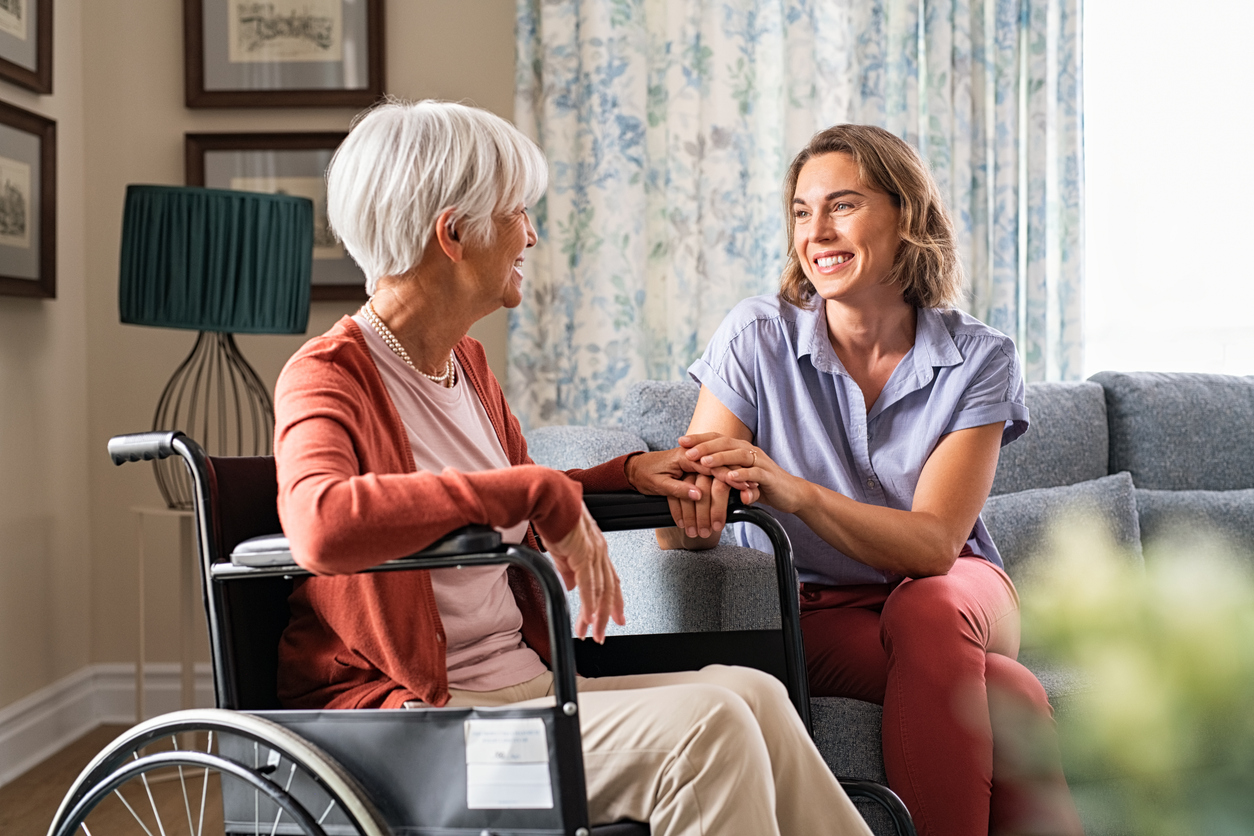By: Kimberly Knight
Rain Rain go away come back another day! Do you remember this rhyme? As we say goodbye to this dreary weather, welcome warmer temperatures, longer days, and anticipate the arrival of spring, I wanted to talk directly to you about something crucial- home safety. Now before you tune me out and think great…another task, hear me out. It’s essential to recognize older adults face unique challenges in maintaining a safe living environment. Falls in the home are a significant concern, and clutter can contribute to them. Spring cleaning, beyond the aesthetics, becomes an essential practice to enhance safety and well-being.
Falls can have profound consequences, both physically and emotionally, for older adults. The risk of fractures, head injuries, and a decline in overall health increases significantly with age. Your proactive efforts, whether as a family caregiver support or navigating this journey solo, can play a pivotal role in preventing falls and fostering a secure living environment.
Let’s take a simple yet powerful step together: decluttering for safety. A clutter-free home is not just visually pleasing; it significantly reduces the risk of accidents, especially for seniors. Unnecessary items, loose rugs, and crowded pathways can turn a home into a potential hazard. Taking the time to declutter living spaces can make a remarkable difference in creating a safer and more accessible environment for you. I can assure you this will probably bring up some fond or not-so-fond memories of spring cleaning with your mother, but here are a few other areas to focus on that she didn’t cover as she was pulling out the spring bedspread.
Conduct a Home Safety Assessment
Begin by assessing the home environment for potential fall hazards. Evaluate each room, identifying areas that may pose risks. Common culprits include loose rugs, uneven flooring, and cluttered pathways. Ensure that living spaces are well-lit, with easy access to light switches. Consider installing handrails in key areas, such as staircases and bathrooms, to provide additional support. We wouldn’t leave you hanging, here’s our home safety checklist to help you get started.
Promote Physical Activity and Strength
Encourage regular physical activity to enhance strength, balance, and flexibility. Simple exercises, tailored to the individual’s abilities, can make a significant difference in fall prevention. Consult with healthcare professionals to develop a suitable exercise routine that aligns with the older adult’s health status and goals.
Medication Management
Review the older adult’s medications regularly, as certain medications or combinations can contribute to dizziness or instability. Ensure that healthcare providers are aware of all prescribed and over-the-counter medications, including supplements. Any concerns about medication side effects should be promptly addressed with the healthcare team.
Vision and Hearing Checks
Regular vision and hearing check-ups are essential for identifying and addressing sensory impairments that may contribute to falls. Corrective measures, such as updating eyeglass prescriptions or addressing hearing loss, can significantly improve the individual’s awareness of their surroundings.
Proactive Fall Prevention Strategies
Implement practical strategies to reduce fall risks on a day-to-day basis. Encourage the use of appropriate footwear with non-slip soles and discourage the use of overly loose or baggy clothing that may lead to tripping. Consider installing grab bars in the bathroom and near the bed for added support. Also, it may be time to look into getting a Medic Alert Device.
Effective Communication
Maintain open and ongoing communication with the older adult to understand their concerns, experiences, and any changes in their physical condition. Encourage them to express any fears or challenges they may be facing related to falls. This dialogue fosters a collaborative approach to fall prevention.
Emergency Preparedness
In the event of a fall, having a well-thought-out emergency plan is crucial. Ensure that emergency contact information is readily accessible and discuss the steps to take in case of a fall. Consider investing in a personal emergency response system to provide immediate assistance when needed.
Seek Professional Assistance
If the older adult has experienced falls or demonstrates an increased risk, consult with healthcare professionals for a thorough assessment. Physical therapists, occupational therapists, and other specialists can offer tailored interventions and exercises to address specific risk factors.
Need Our Help…Schedule a Home Safety Visit Today!
For those who may need additional assistance or prefer a professional assessment, we offer Home Safety Visits. Our trained experts can conduct a thorough evaluation of your home, identifying potential hazards and providing personalized recommendations to enhance safety.
Take the proactive step towards a safer living environment by scheduling a Home Safety Visit today. Our team is dedicated to ensuring that your home is not only clean and organized but also optimized for safety, giving you the peace of mind, you deserve. Schedule a care consultation today so that we can discuss further.
Kimberly Knight is the Director, Caregiver Support Program at The Senior Source. She holds a Master of Science in Social Work from the University of Texas at Arlington and B.S. in General Education from Alcorn State University. Kimberly is a Certified Dementia Practitioner (CDP) and Certified Alzheimer’s Disease Dementia Care Trainer (CADDCT). Kimberly serves as a council member for the Dallas Area Agency on Aging and the North Central Texas Council of Governments.

